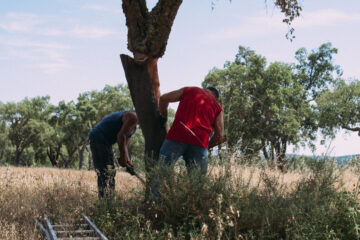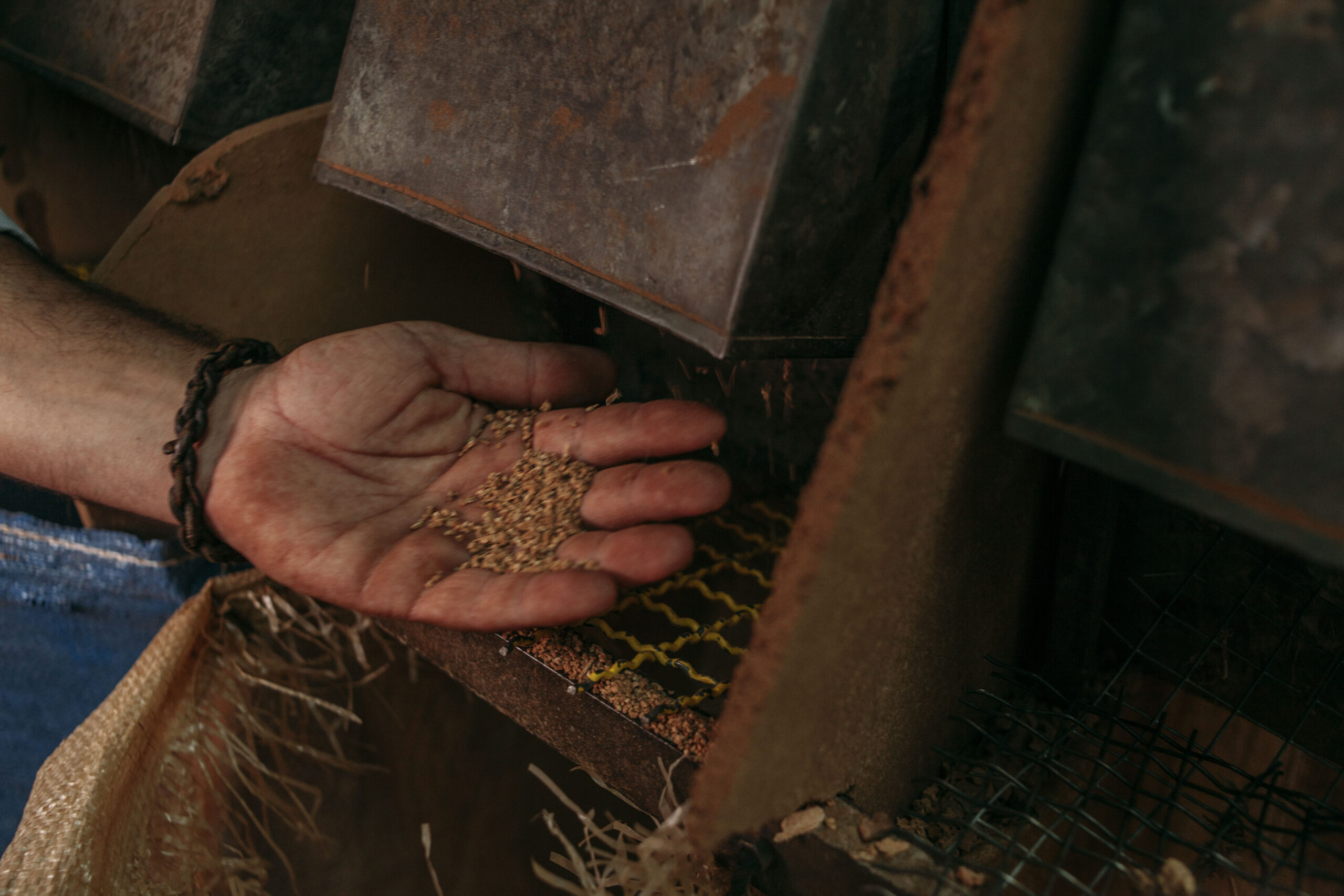We, human beings, are blessed with one of the greatest gifts: the sense of touch. The ability to feel a texture and to identify it with our eyes closed is phenomenal. We can even visually perceive how does cork feel like by only looking at it.
But sometimes, our senses get confused! That is when Mother Nature decides to put us to a test. She checks if we find time to stop, admire, and touch with our hands the world around us. The cork oak tree is one of the species that embraced this challenge to remind us that not everything is what it seems.
So, would you like to touch and find out how cork feels like?
Let’s do it! But while exploring, we have to be gentle and careful… The tree has feelings too.
It feels rough but also smooth
That may seem obvious, except that it is not. If you ever had a piece of cork from a bottle of wine in our hands or a Corc Yoga mat, you know that the texture of the material is quite smooth. That is the result of being processed and treated. But how does cork feel like then?
The raw cork is quite rough and it is so tough that it is the chosen shelter for the eggs of certain species of butterfly. Besides, the less porous it is, the more quality it will have. That is why a piece of cork without pores is called a flower [flor].
Such concerns about the tree’s skin led to legal decisions. In Portugal, the harvest period can only happen every 9 or more years and has to be made by experts to avoid any damage to the tree. Any scar will not only hurt the tree, as it will affect the quality of the material. Moreover, we can have a product without felling the tree! if everything is done properly, the tree feels appreciated and gives back! It can live up to 200 years and generate cork every 3285 days. There are absolutely no hard feelings!
It feels warm and fresh too
Cork itself is at the same room temperature as us.
In Winter times, cork fits as a jacket. During Summer, it keeps the tree fresh. Looks like magic, doesn’t it? It is so true that the tree is even known for its resistance to fire.
Also, the majority of Portuguese cork oak trees grow where high temperatures reach their peak. Where it is too warm and feels like everything is moving in slow motion. However, the cork oak tree shows its generosity once more. Its big treetop creates a shadow shield against such arduous weather. Well, it is time for a nap!
It feels big
Indeed, the cork oak tree is quite a VIP in the forest. First, since the 7th century, laws were created to forbid their felling. Then, in 2011, the oak tree receives the title of Portugal’s National Tree. The contest European Tree of the Year also rewarded a 234 years old Portuguese cork oak tree named “Whistler”. Its name comes from every single bird that rests in the treetop and harmoniously sings.
But do you think this tree embraces its success and feels like it deserves doing nothing?
No. It keeps storing CO2 in itself, cleaning the air we breathe. It avoids further desertification of forest areas and consequent degradation of the soil. And have we mentioned the power of cork already? There are so many great features! This tree is an invaluable and durable resource! “Those who care about your grandkids will plant a cork oak tree” – says an old Portuguese saying. In short, this tree embraces many traditions and even local stories.
The oak tree itself is a member of a big family. In Portugal, it grows in a land called Montado with its nearest sister, the holm tree. But we can also find it in mixed forest areas with other trees like the pine tree. As cousins, there are approximately 135 species of plants, 24 reptiles, and amphibians, 160 birds, and 37 mammals living right next, under and on top of the cork oak tree (according to the Portuguese cork association).
When they get together, it is like a Sunday family reunion.
In short, cork (and the cork oak tree) feel like home.



